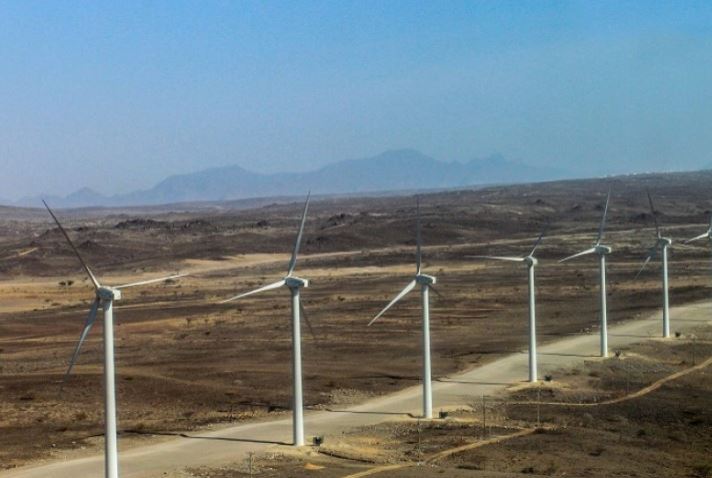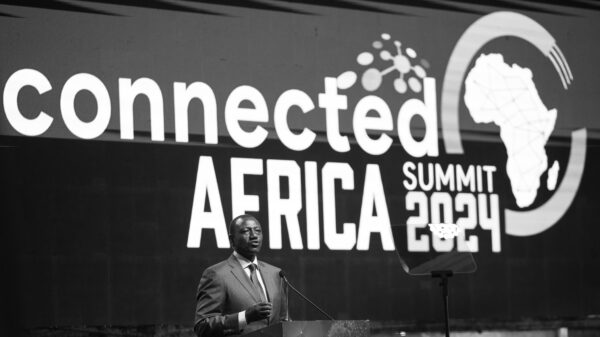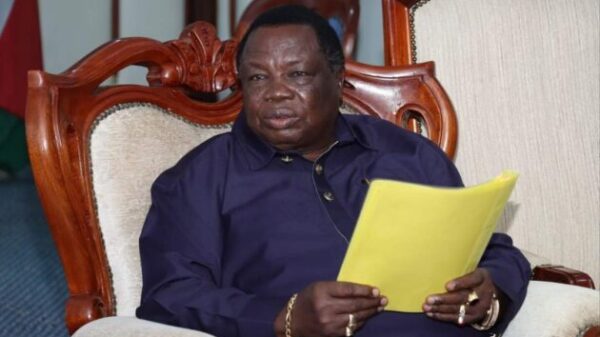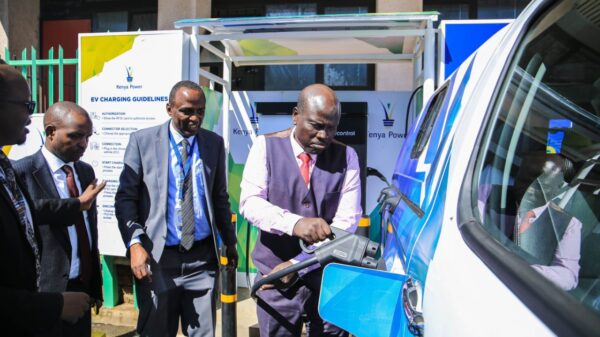
The BloombergNEF sponsored report finds that Kenya accounted for over a third of all 2018 foreign clean energy investment into sub-Saharan Africa.
That year, Kenya recorded its highest ever clean energy investment with US$1.4 billion attracted for geothermal, wind and solar plants/AFP
NAIROBI, Kenya, Nov 25 – Kenya has been ranked fifth on the Climatescope survey owing to its extensive renewable energy value chain.
The BloombergNEF sponsored report finds that Kenya accounted for over a third of all 2018’s foreign clean energy investment into sub-Saharan Africa.
That year, Kenya recorded its highest ever clean energy investment with US$1.4 billion attracted for geothermal, wind and solar plants.
Additionally, non-hydro renewables accounted for 38 percent of the country’s capacity and 49 percent of generation.
Kenya was ranked behind India, Chile, Brazil and China.
The finding comes at the backdrop of President Uhuru Kenyatta’s declaration in December 2018 stating that Kenya would attain a 100 percent green energy consumption by 2020.
However, there has been no legislative action to set such a target.
“This non-binding target appeared to include large-hydro, which accounted for more than 30 percent of the country’s generation in 2018, and is difficult to achieve within the timeline,” the survey says,
Still, Kenya is gradually increasing its non-large hydro renewables by adding solar, wind and geothermal.
This comes at a time when Kenya is shifting from a feed-in tariff scheme to an action-based one, but no further details have been announced even though parliament approved a draft bill in August 2018.
Overall, the report finds that new investment in wind, solar, and other clean energy projects in developing nations dropped sharply in 2018, largely due to a slowdown in China.
While the number of new clean power-generating plants completed stayed flat year-to-year, the volume of power derived from coal surged to a new high.
The findings suggests that developing nations are moving toward cleaner power but not nearly fast enough to limit global CO2 emissions or the consequences of climate change.
Most of the new power-generating capacity added in developing nations in 2018 came from wind and solar, for instance. But most of the power to be produced from the overall fleet of power plants added in 2018 will come from fossil sources and emit CO2.
This is due to wind and solar projects generating only when natural resources are available while oil, coal, and gas plants can potentially produce around the clock.
Meanwhile, the volume of actual coal-fired power generated and consumed in developing countries jumped to 6.9 thousand terawatt-hours in 2018, up from 6.4 thousand in 2017.
The approximately 500 terawatt hours in new coal consumption is roughly equivalent to all the power consumed in Texas in a normal year. Across the 104 emerging markets surveyed in Climatescope, coal accounted for 47 percent of all generation.
China, both the world’s largest CO2 emitter and largest market for clean energy production and consumption, played a crucial role in the story. Investment in new wind, solar, and other non-large hydro renewables projects in the country fell to $86 billion in 2018 from $122 billion in 2017.
That net decline mirrored a US$36 billion drop in emerging markets’ clean energy investment figures, the largest ever tracked by Climatescope.
The decline was not confined to China, however. Inflows to clean energy projects in India and Brazil slipped US$2.4 billion and US$2.7 billion, respectively from the year prior.
Across all emerging markets surveyed, 2018 investment fell to $133 billion, lower than not just the 2017 total but the 2015 figure as well. Overall, declining costs for solar and wind played a considerable factor in the fall in absolute dollar investment in emerging economies.
“This year’s Climatescope headline results are undeniably disappointing,” said Luiza Demôro, who manages the project for BloombergNEF. “However, apart from the very largest nations, we did see some important and positive developments, in terms of new policies, investment, and deployment.”
Excluding China, India and Brazil, clean energy investment jumped to US$34 billion in 2018 from US$30 billion in 2017.
Most notably, Vietnam, South Africa, Mexico and Morocco led the rankings with a combined investment of US $16 billion in 2018. Excluding China alone, new clean energy installations in emerging markets grew 21 percent to achieve a new record, with 36GW commissioned in 2018, up from 30GW in 2017. This is twice the clean energy capacity added in 2015 and three times the capacity installed in 2013.
Despite the spike in coal-fired generation, the pace of new coal capacity added to grids in developing nations is slowing, according to Climatescope.
New construction of coal-fired power plants fell to the lowest level in a decade in 2018. After peaking at 84GW of new capacity added in 2015, coal project completions plummeted to 39GW in 2018. China accounted for approximately two thirds of this decline.
“The transition from coal toward cleaner sources in developing nations is underway,” said Ethan Zindler, head of Americas at BNEF. “But like trying to turn a massive oil tanker, it takes time.”
The Climatescope results come just ahead of next month’s United Nations-supported climate negotiations in Madrid.
Under the 2015 Paris Climate Agreement by the United Nations Framework Convention on Climate Change (UNFCCC), over 190 nations have agreed to substantially curb their CO2 emissions to avoid the worst effects of climate change.
In addition, under the pact, wealthy nations promised to provide US$100 billion in “north-south” funding to developing nations to help them grow sustainably.
This year’s Climatescope results suggest substantial additional work will be required to meet that commitment, despite some progress.
Of the total US$133 billion in asset finance that flowed to supporting development of new clean energy projects in the markets in developing nations, just US$24.4 billion or 18 percent came from sources outside those countries.
Of that total, the large majority came from private sources of capital, such as international project developers, commercial banks, and private equity funds. Inflows from development banks funded largely with OECD government funds did rise to a record US$6.5 billion in 2018.
There is little to suggest the overall goal of US$100 billion per year in support for a variety of climate-related activities will be met anytime soon, however.
In addition to presenting macro trends on clean energy in developing countries, Climatescope scores and ranks individual markets on their overall potential for clean energy development.




































